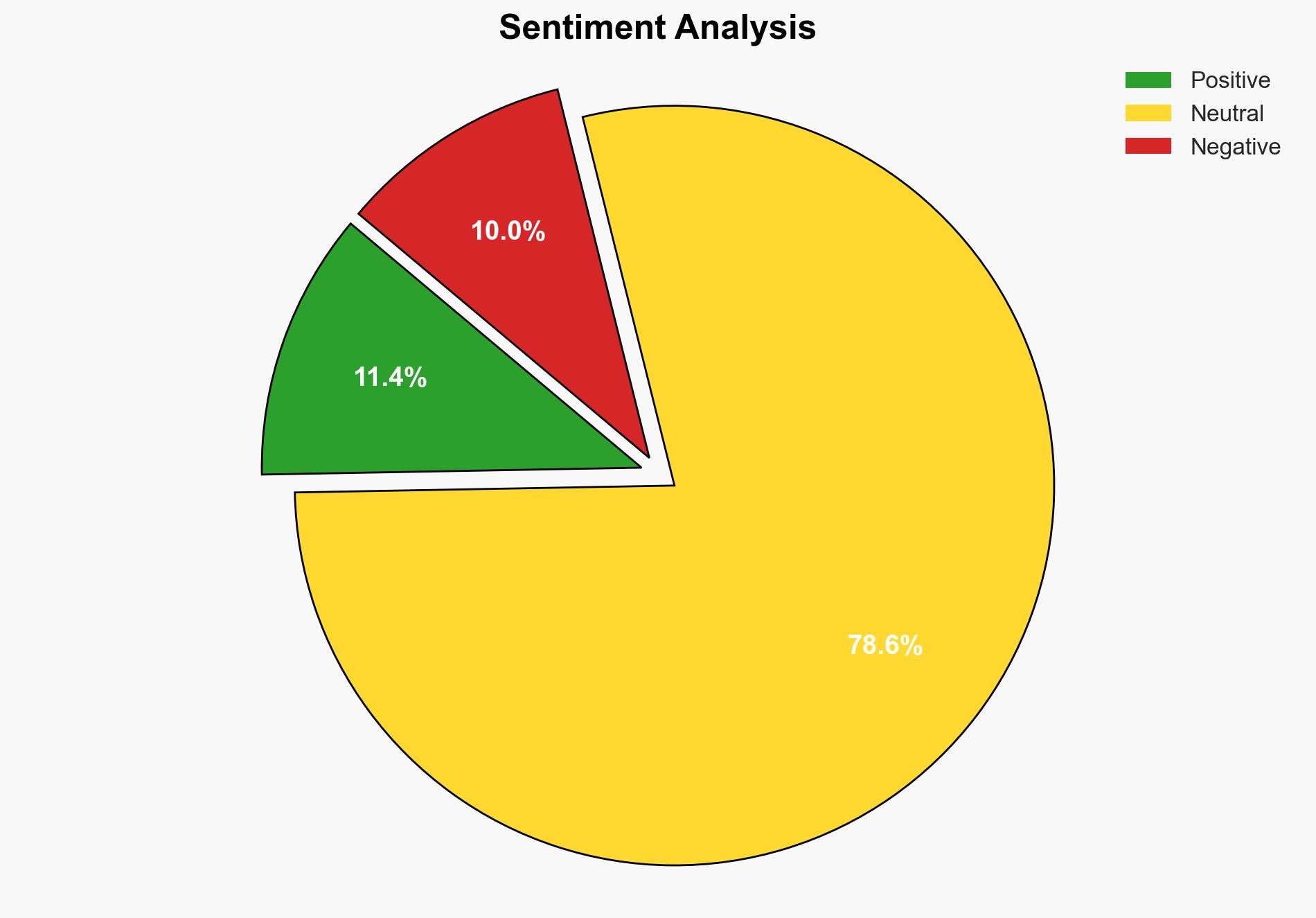Baffling Microsoft ad shows Copilot AI incorrectly identifying Windows 11 setting then pretending it was working as intended – Windows Central
Published on: 2025-11-15
AI-powered OSINT brief from verified open sources. Automated NLP signal extraction with human verification. See our Methodology and Why WorldWideWatchers.
Intelligence Report:
1. BLUF (Bottom Line Up Front)
There is a moderate confidence that the Microsoft Copilot AI advertisement’s failure to correctly demonstrate a Windows 11 setting change was an unintended oversight rather than a deliberate act of deception. This incident highlights potential gaps in Microsoft’s AI integration strategy and user communication. It is recommended that Microsoft reassess its marketing strategies and AI testing protocols to prevent similar occurrences and mitigate user backlash.
2. Competing Hypotheses
Hypothesis 1: The advertisement error was an unintended oversight due to inadequate testing and quality control processes.
Hypothesis 2: The advertisement was deliberately misleading, designed to overstate the capabilities of Copilot AI to drive user interest and engagement.
Hypothesis 1 is more likely given the complexity of AI integration and the potential for genuine errors in demonstration, especially in a rapidly evolving tech landscape. Hypothesis 2 is less likely as deliberate deception could severely damage Microsoft’s credibility and brand reputation, which is a significant risk for a leading tech company.
3. Key Assumptions and Red Flags
Assumptions: It is assumed that Microsoft has a vested interest in maintaining user trust and would not intentionally mislead its audience. It is also assumed that the advertisement was subject to standard quality checks.
Red Flags: The lack of immediate corrective action or clarification from Microsoft could indicate either a slow response mechanism or an underestimation of the backlash’s impact. The presence of negative user feedback and the disabling of replies on social media posts are indicators of potential reputational damage.
4. Implications and Strategic Risks
The incident could lead to increased skepticism towards Microsoft’s AI initiatives, potentially affecting user adoption rates and market share. If not addressed, it could escalate into broader reputational damage, impacting investor confidence and stock performance. Additionally, this could embolden competitors to capitalize on Microsoft’s perceived missteps.
5. Recommendations and Outlook
- Actionable Steps: Microsoft should issue a public clarification and apology to address user concerns. They should also enhance their internal testing and quality assurance processes for AI demonstrations.
- Best Scenario: Microsoft successfully addresses the issue, restoring user trust and reinforcing its commitment to transparency and quality.
- Worst Scenario: Continued negative perception leads to decreased user engagement and a loss of market share to competitors.
- Most-likely Scenario: Microsoft implements corrective measures, mitigating immediate backlash but facing ongoing scrutiny in future AI-related initiatives.
6. Key Individuals and Entities
Pavan Davuluri (Windows President) – Mentioned in relation to Microsoft’s vision for Windows and user feedback.
7. Thematic Tags
Cybersecurity, AI Integration, User Experience, Corporate Reputation
Structured Analytic Techniques Applied
- Adversarial Threat Simulation: Model and simulate actions of cyber adversaries to anticipate vulnerabilities and improve resilience.
- Indicators Development: Detect and monitor behavioral or technical anomalies across systems for early threat detection.
- Bayesian Scenario Modeling: Quantify uncertainty and predict cyberattack pathways using probabilistic inference.
- Narrative Pattern Analysis: Deconstruct and track propaganda or influence narratives.
Explore more:
Cybersecurity Briefs ·
Daily Summary ·
Support us
·





